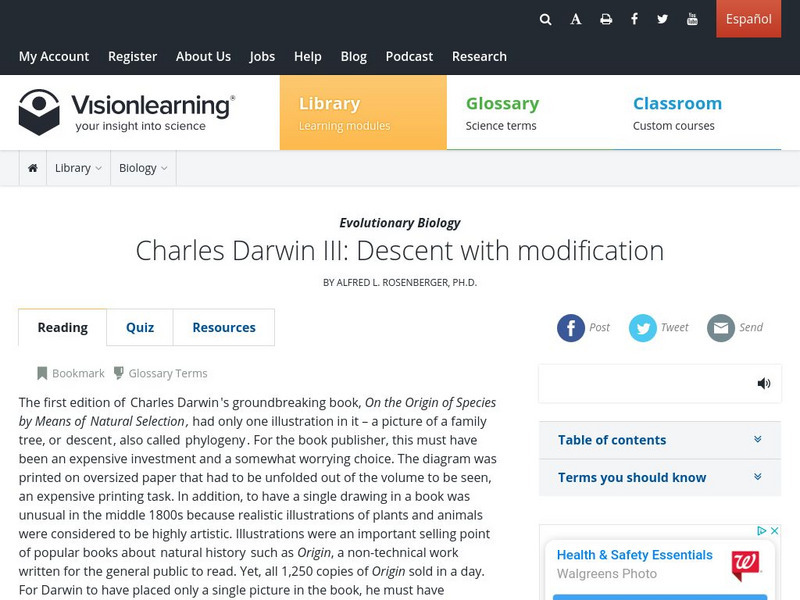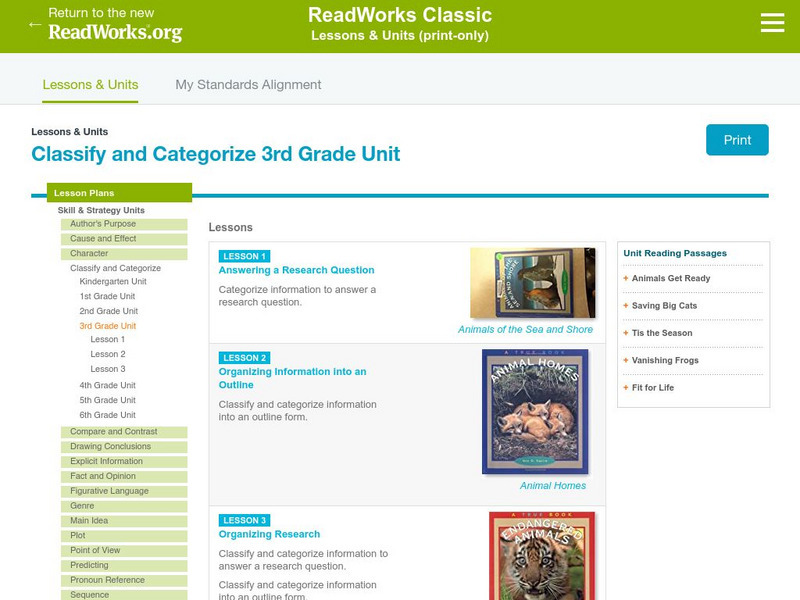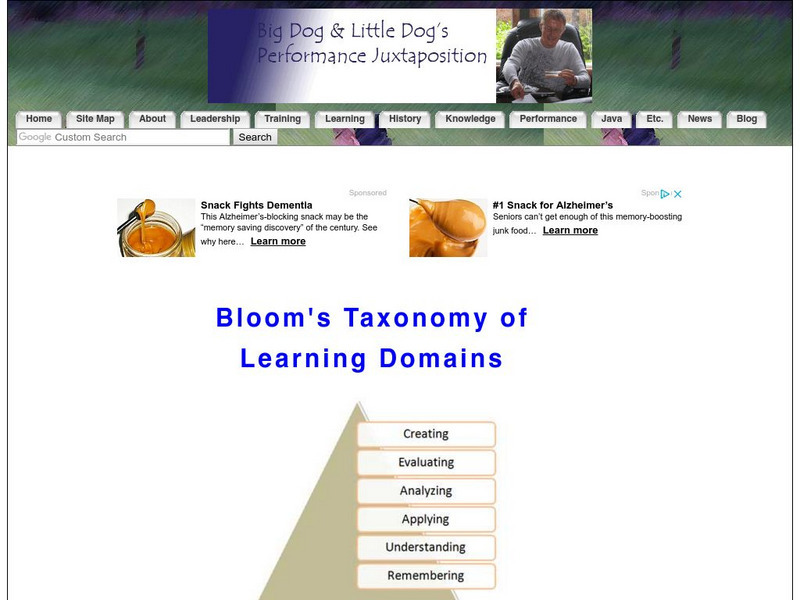BiologyWise
Biology Wise: A Brief Understanding of Euglena Movement
Describes the characteristics and classification of Euglena, how it reproduces, and how it is able to move through water using its single flagella.
Other
Panhandle Area Educational Consortium: The Six Kingdoms of Life [Pdf]
Scientists look at the evolutionary history of organisms to divide them into kingdoms. For awhile, there has been 5 kingdoms, but many scientist are now using 6 kingdoms.
Discovery Education
Discovery Education: The Dirt on Soil
This interactive website explores the various soil layers and introduces you to the lifeforms that live in those soil layers.
Other
Jean Piaget Society
Learn more about Jean Piaget from this website. The site is dedicated to the study of human knowledge and development.
Vision Learning
Visionlearning: Biology: Charles Darwin Iii: Descent With Modification
Instructional module focusing on Charles Darwin's theory of Descent with Modification. Discusses how slight changes from parent to offspring create variation and potentially create new species over time. Site also includes an interactive...
Alabama Learning Exchange
Alex: Shopping With the Dewey Decimal System
This instructional activity is an introduction to the ten main categories of the Dewey Decimal Classification System. The Dewey Decimal Classification System will be compared with the familiar layout of a grocery store. Young scholars...
American Museum of Natural History
American Museum of Natural History: O Logy: Beyond T. Rex
Launch this OLogy link to find a dinosaur cladogram, an illustration that organizes dinosaurs into groups based on the unique characteristics they share, like a three-toed foot.
Estrella Mountain Community College
Online Biology Book: Biological Diversity: Fungi
Find out about the kingdom of fungi. See full-color diagrams and microscopic photographs as you learn about the classification of this group of organisms.
Other
Flickr: Critical Thinking Skills Poster
A downloadable critical thinking skills poster based on the original six levels of Bloom's taxonomy.
Alabama Learning Exchange
Alex: Know the Dewey: That's a Rap
Middle school students develop an understanding of the organization of the library through demonstration, creative writing, book searches, and Internet use.
Famous Scientists
Famous Scientists: Carolus Linnaeus
Learn about the life and work of Carolus Linnaeus, the scientist who formalized the modern system of naming organisms called binomial nomenclature.
ClassFlow
Class Flow: Feline Facts
[Free Registration/Login Required] Classification web to sort and group ideas about cats. Students pull facts from behind cat photo and place into proper place on web. Use with any reading books related to cats.
TED Talks
Ted: Ted Ed: The Evolution of Animal Genitalia
Genitals are the fastest-evolving organs in the animal kingdom. Menno Schilthuizen explains how the evolutionary biology of nature's nether regions uncovers a hidden world of seduction, conflict, and rivalry.
CK-12 Foundation
Ck 12: Life Science: Protist Characteristics
[Free Registration/Login may be required to access all resource tools.] Protists are eukaryotes, which means their cells have a nucleus and other membrane-bound organelles. Most protists are single-celled. Other than these features, they...
Read Works
Read Works: Classify and Categorize 3rd Grade Unit
[Free Registration/Login Required] A three-lesson unit on classifying and categorizing through which students learn how to categorize information to answer research questions and then to organization that information into an outline....
BiologyWise
Biology Wise: Different Types of Bacteria
Discusses the different criteria used to classify bacteria and the groups of bacteria within each category. Groups are organized by characteristics such as morphology, shape, cell wall structure, and presence of flagella.
Donald Clark
Bloom's Taxonomy of Learning Domains
This article--in text and charts--explains the three learning domains devised by Benjamin Bloom.
Biology Corner
Biology Corner: Cladogram Analysis
A lesson plan where students analyze a cladogram to understand a derived characteristics between a group of organisms. After analyzing the prepared cladogram, students create their own.
University of California
Ucmp: Introduction to Ctenophora
This is an advanced level review of the biology of these organisms. The opening photographs are worth seeing!
Other
Path Finder Science: Tardigrades
This site displays information about a tardigrades research study that students were involved in. Tardigrades are fascinating, tiny creatures that can survive under the most extreme conditions. The structure of the project is there for...
Other
Siemens Science Day: Life Science: The Key to It All
In this hands-on science activity, learners will create their own unique creatures as well as dichotomous keys so that classmates can identify the creature.
Other
Stat Soft: Statistics Glossary
Dozens of statistical terms are defined and illustrated in this glossary.
Biology 4 kids
Biology4 Kids: The Top Four Kingdoms
Read about the four most familiar kingdoms: fungi, plant, animal, and protist.



















